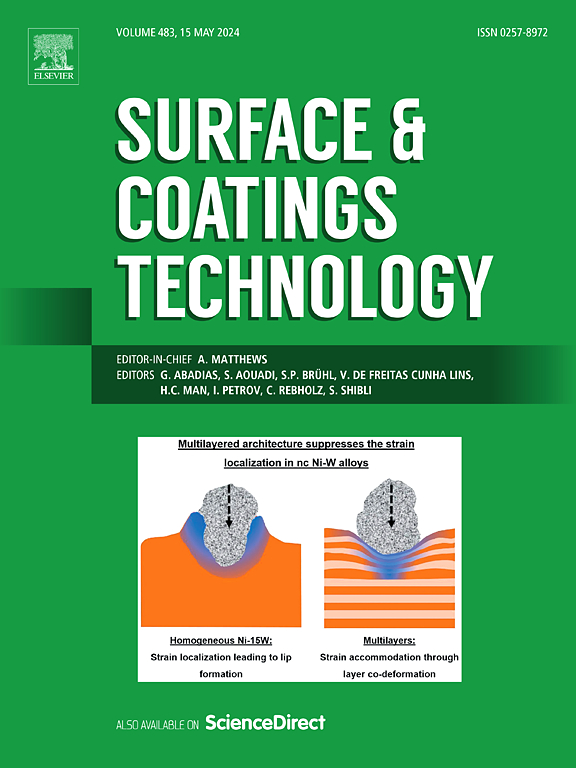Engineered porous bio-ceramic coating with antibacterial and excellent biocompatibility on the surface of low modulus multi-component titanium alloy
IF 5.3
2区 材料科学
Q1 MATERIALS SCIENCE, COATINGS & FILMS
引用次数: 0
Abstract
In order to integrate biomimetic porous structure with bioactive metal elements, a novel containing-Ag/Mg coating was developed on the surface of Ti-Nb-Zr-Mg (TNZM) alloy with low modulus using micro-arc oxidation (MAO) technology. The thickness of MAO coating with dual-layered structure gradually decreases with the increase of AgNO3 concentration in the electrolyte. The inner layer in the MAO coating comprising basal elemental oxides (TiO2, Nb2O5, ZrO2, and MgO) shows high degree of density and continuity. In contrast, the outer layer in the MAO coating exhibits a morphology typical of a volcanic pile pore surface. In addition to having the same metal oxides as the inner layer, the outer layer also contains hydroxyapatite Ca, P, Ag and O. The MAO coatings provide barrier protection, the ranking for corrosion rate from low to high is: MAO-2 < MAO-3 < MAO-1 < TNZM. The antibacterial rate of MAO-3 against E. coli is as high as 100 %. Meanwhile, the porous structure and released Ca/P/Mg synergistically regulate early osteoblast attachment and activity. This result indicates that the Mg and Ag sustained-release bionic MAO coating has excellent corrosion resistance, antibacterial properties, and cytocompatibility. Engineered porous bio-ceramic coating has potential application prospects in the field of bone implantation.

求助全文
约1分钟内获得全文
求助全文
来源期刊

Surface & Coatings Technology
工程技术-材料科学:膜
CiteScore
10.00
自引率
11.10%
发文量
921
审稿时长
19 days
期刊介绍:
Surface and Coatings Technology is an international archival journal publishing scientific papers on significant developments in surface and interface engineering to modify and improve the surface properties of materials for protection in demanding contact conditions or aggressive environments, or for enhanced functional performance. Contributions range from original scientific articles concerned with fundamental and applied aspects of research or direct applications of metallic, inorganic, organic and composite coatings, to invited reviews of current technology in specific areas. Papers submitted to this journal are expected to be in line with the following aspects in processes, and properties/performance:
A. Processes: Physical and chemical vapour deposition techniques, thermal and plasma spraying, surface modification by directed energy techniques such as ion, electron and laser beams, thermo-chemical treatment, wet chemical and electrochemical processes such as plating, sol-gel coating, anodization, plasma electrolytic oxidation, etc., but excluding painting.
B. Properties/performance: friction performance, wear resistance (e.g., abrasion, erosion, fretting, etc), corrosion and oxidation resistance, thermal protection, diffusion resistance, hydrophilicity/hydrophobicity, and properties relevant to smart materials behaviour and enhanced multifunctional performance for environmental, energy and medical applications, but excluding device aspects.
 求助内容:
求助内容: 应助结果提醒方式:
应助结果提醒方式:


